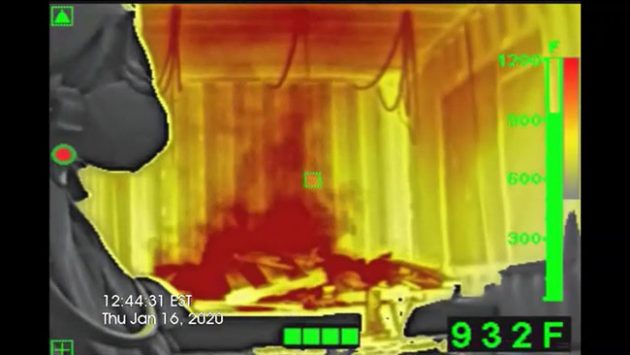
Features
Thermal Imaging: FAQS
April 15, 2021
By Manfred Kihn
 This image shows the older technology.
This image shows the older technology. In this edition’s article, I would like to focus on how much you do or don’t know about thermal imaging (TI). Even though fire service thermal imaging has been around since the early 1990s, there is still a lack of knowledge and education on this subject and its uses. Let’s delve into this subject with some questions and answers to challenge your knowledge.
1. How many fire departments have thermal imagers (TIs)?
Not enough. There are still some fire departments that do not have any TIs and every fire department should have at least one.
2. How many fire departments have more than one TI?
The advantage of having more than one TI on an apparatus gives the firefighters extra eyes on the fire. Let’s say you have two TIs. You place one TI on board the apparatus for the officer and a second imager is stored in the back of the cab for a crew member. This is becoming increasingly common during deployment of manpower as each part of the crew, whether he/she has VES (vent, enter, search), roof, outside vent or other duties, has an additional TI for added safety and capabilities.
3.How many different brands of TIs do you have in use?
Having more than one brand of TI can be confusing when understanding the tool’s operations, batteries, charging systems, etc. Standardizing with one brand increases operator safety and helps you to develop a cohesive educational training program for the crew.
4.How many firefighters can say they are proficient in using a TI?
If you are using your TI on every response that you go on, I would say you should be proficient in its operations. If you don’t, time to go back to the classroom and practice.
5.Is your TI used on every call that you respond to?
This is where I need you to think outside the box. A TI can be used on every response. Each time you use your TI, you are gaining valuable information that makes you proficient.
6.Do you know how many modes are in your TI and what they are?
Most TIs have two modes while some manufactures have three modes. Imagers start in high gain mode and then switch to low gain mode at 300 F/148 C while some TIs go from high, medium and low.

This image illustrates the new enhanced TI technology.
8.Do you know what the shutter speed or refresh rate is on your TI?
Depending on your TI’s manufacture, the shutter speed or refresh rate can vary from 9 Hz, 15 Hz, 30 Hz or 60 Hz. This means the higher the number, the faster the imager refreshes itself to give the operator the clearest imagery possible. The lower the number, the slower the refresh rate and the longer the imager processes the infrared information, meaning you can miss a lot of important details.
9.When is the best time to use a thermal imager — daytime, nighttime, anytime or none of the time?
Anytime! There are no limitations to when you can use a TI. Daytime or nighttime, the imager will detect heat signatures that cannot be detected with the naked eye regardless of lighting conditions.
10.When should I replace my TI(s)?
Replacing or upgrading TIs every couple of years is a good idea as manufactures are always updating and advancing their technologies.
11. Do you know some of the limitations of using a TI?
The first is that a TI cannot see into water, so looking for a victim underwater will not work but will work great if the victim is floating on the surface. Other limitations include shiny surfaces which cause reflections and can give you multiple images that your TI may not interpret correctly. Some of these can be hardwood floors, polished concrete floors, windows, stainless steel appliances and glass shower doors just to name a few. A TI also cannot see through walls, floors, doors and shower curtains. Remember that our TI can only see to the nearest surface.
This is just scratching the surface when it comes to thermal imaging. Should you have any topic ideas of questions, reach out to at manfred_kihn@bullard.com.
Until next time, stay safe and practice often.
Manfred Kihn is a 19-year veteran of the fire service, having served as an ambulance officer, emergency services specialist, firefighter, captain, and fire chief. He has been a member of Bullard’s Emergency Responder team since 2005 and is the company’s fire training specialist for thermal imaging technology. He is certified through the Law Enforcement Thermographers’ Association (LETA) as a thermal imaging instructor and is a recipient of the Ontario Medal for Firefighters Bravery. e-mail him at manfred_kihn@bullard.com.
Print this page